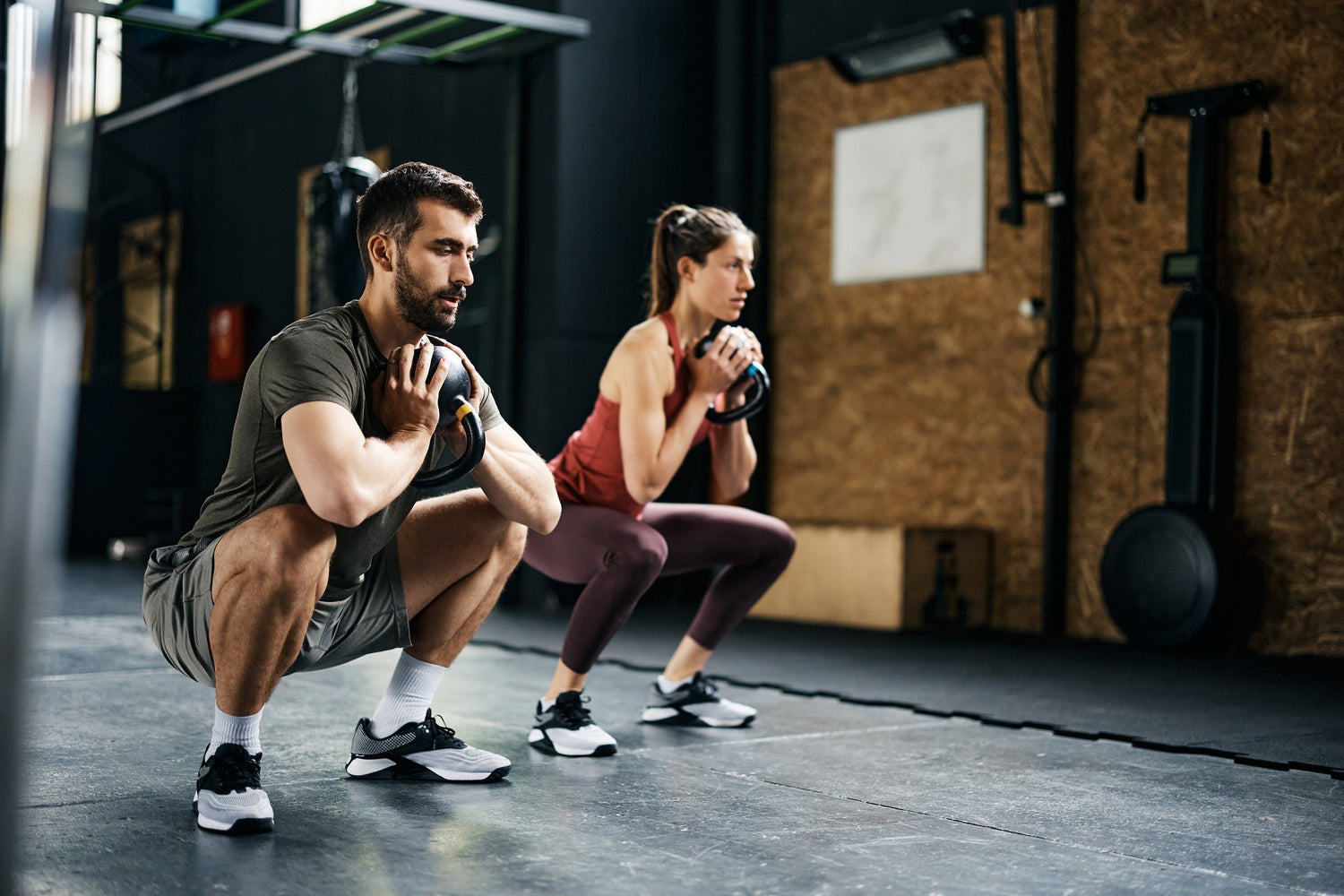Okay, hands up — who’s ever been mid-squat and thought “Hmm… is my knee meant to sound like a bowl of Rice Krispies?” Yeah , me too. And I’m not even the client — I’m the one dishing out the squatting advice! But that’s exactly why I went on a little mission recently to crack the case of avoiding knee pain when squatting (that’s right, detective hat firmly on ), so we can help our clients squat stronger, better, and without wincing every time they hit 90 degrees.
Turns out, squats are a bit like Marmite. Some people love them, some people pretend to love them while secretly cursing under their breath every rep . But one thing’s for sure — they’re one of the best compound movements around. Glutes, quads, hamstrings, core, lower back — squats are the Beyoncé of leg day.
But when knee pain creeps in? That’s when the squat loses its sparkle. So, if your client is moaning more than motivating during their set, here’s what I found from chatting with personal trainers and digging into the science.
First Things First: Let’s Talk About Form
When it comes to avoiding knee pain when squatting, the absolute number one culprit is bad form. And yes, I know that sounds a bit obvious, but you’d be surprised how many clients (and okay, some trainers) aren’t quite hitting the sweet spot.
Here’s the basic checklist:
-
Knees should track the toes — if they’re caving in or shooting way forward, red flag alert!
-
Feet shoulder-width apart — unless you're doing a sumo variation, this is your squat basecamp.
-
Back straight, core braced — no hunching like Quasimodo, thank you.
-
Heels stay grounded — if the heels are lifting, you’ve either got tight ankles or you’re doing interpretive dance.
If your client’s knees are drifting inwards (a.k.a. the dreaded valgus collapse), then it’s time to strengthen those glutes and give them a bit of tough love with some banded squats or lateral walks. Hip stability is key .
Mobility Overload: Ankles and Hips Matter Too
Now here’s something that blew my mind a little. A lot of knee pain isn't even about the knees. It’s like blaming the printer when the Wi-Fi is the issue.
Ankle and hip mobility play a huge role in squat depth and alignment. If your client can’t get low without their heels flying off the floor or their lower back rounding like a dying shrimp, they’re probably overcompensating — and their knees are taking the hit.
One personal trainer I chatted to swears by ankle mobility drills before every leg session. Think: foam rolling the calves, ankle rocks, deep squat holds. You can find some really helpful knee strengthening exercises here that can support those stiff joints and improve squat mechanics too.
And if your client’s hips are tighter than their budget after Christmas? Add in some dynamic stretches — world’s greatest stretch, anyone?
Know When to Switch It Up
Sometimes, no matter how much we tweak, knees just don’t love the traditional back squat. And you know what? That’s okay.
There are loads of squat alternatives that can help clients build strength and muscle without aggravating the knees. Bulgarian split squats, box squats, goblet squats — it’s a smorgasbord of pain-free options (well, the good kind of pain!).
I tried switching a client with chronic knee issues to tempo box squats, and not only did it help her stay pain-free, but her glute gains were through the roof. Moral of the story? There’s no “one squat fits all” solution. Customise based on the client — their mobility, history, and comfort level.
Footwear Makes a Difference (Yes, Really)
Wearing worn-out runners to squat is like trying to chop wood with a butter knife. Supportive shoes with a solid, flat sole (hello, Converse or lifting shoes) help with stability and can actually reduce knee strain.
If your client’s showing up in squishy, foam-soled trainers, it might be time for an intervention. You wouldn’t let someone bench press with a noodle bar, so don’t let them squat with dodgy footwear.
Strengthen the Supporting Cast
Strong knees need support. Quads, hamstrings, glutes, calves, and even the core all pitch in to keep squats smooth and knees safe.
A solid program that includes posterior chain exercises like Romanian deadlifts, glute bridges, hamstring curls, and calf raises can go a long way in avoiding knee pain when squatting. And for the cardio-lovers? Check out these exercises to strengthen knees for running . Perfect for those clients trying to balance leg day with their weekend 10k.
Don’t Forget the Warm-Up (Seriously, Don’t )
If your client’s idea of a warm-up is walking from the car park to the gym entrance, we’ve got a problem. Skipping warm-up is like turning up to a first date in pyjamas — it's just not the vibe.
A good warm-up should raise the heart rate, activate key muscles, and prep the joints. Leg swings, banded monster walks, bodyweight squats, and glute bridges are my go- tos . Not only does it fire up the right muscles, but it mentally shifts your client into workout mode.
And yes, I’ve tried convincing a client to do a glute bridge with a straight face while they’re laughing because they “feel like a crab stuck on its back.” But hey, whatever works.
Still No Luck? Bring in the Big Guns
If your client’s still struggling with knee pain despite all the tweaks, it might be time to refer out or encourage them to upskill. There are some fab CPD courses on biomechanics and injury prevention. I’ve been eyeing up the Active IQ Level 3 Personal Training Course myself, and honestly, the extra knowledge never hurts.
You can also check out sites like PTcert.co.uk or NRPT for more insight into advanced trainer development. Trust me — knowing how to manage knee issues can make you a magnet for clients who’ve been let down by PTs who don’t “do knees.”
Final Thoughts (And A Few LOLs)
So, if your client is grimacing every time they squat like they’ve just sat on a Lego brick, it’s time to rethink the plan. Avoiding knee pain when squatting is totally doable with the right approach — good form, mobility, strength work, smart modifications, and a sprinkle of common sense.
Remember: knees aren’t optional equipment — we need them to climb stairs, dance terribly at weddings, and dramatically fall onto the sofa after a long day. So let’s treat them kindly!
And hey, if you’re passionate about helping clients move better and feel better, dive deeper with learning resources at places like YMCA Awards or UK Active . The more you know, the more bulletproof those knees (and reputations) will be.
Got your own go-to tricks for avoiding knee pain when squatting? I’d love to hear them — just don’t say “don’t squat, ” or we can’t be friends.
Disclaimer – this article has explored the concept of avoiding knee pain when squatting by collating views from online sources. The content of the article is not intended as, and should not be interpreted as doctors advice, always speak to a doctor or physiotherapist if you are in any sort of pain when exercising.
Article by Jemma Walsh, Blog Editor for Study Active.







